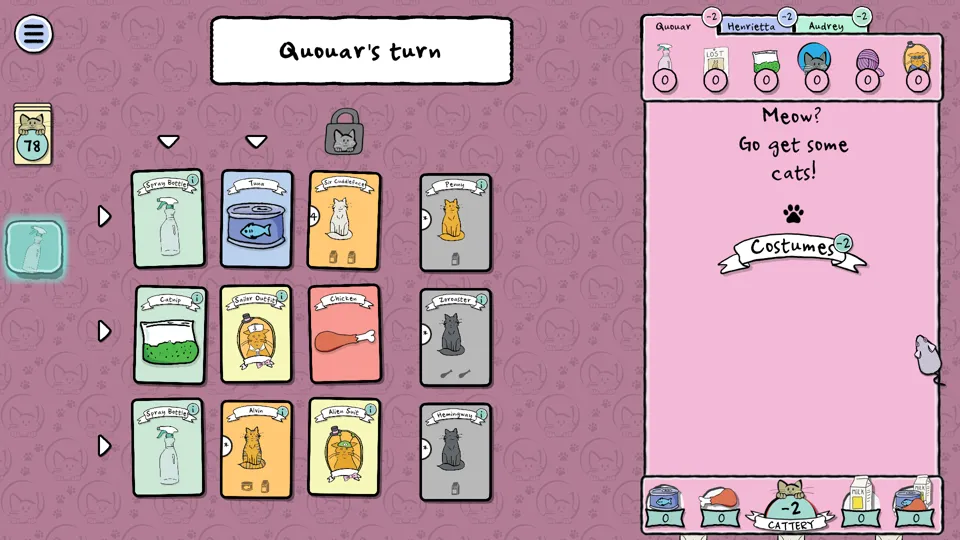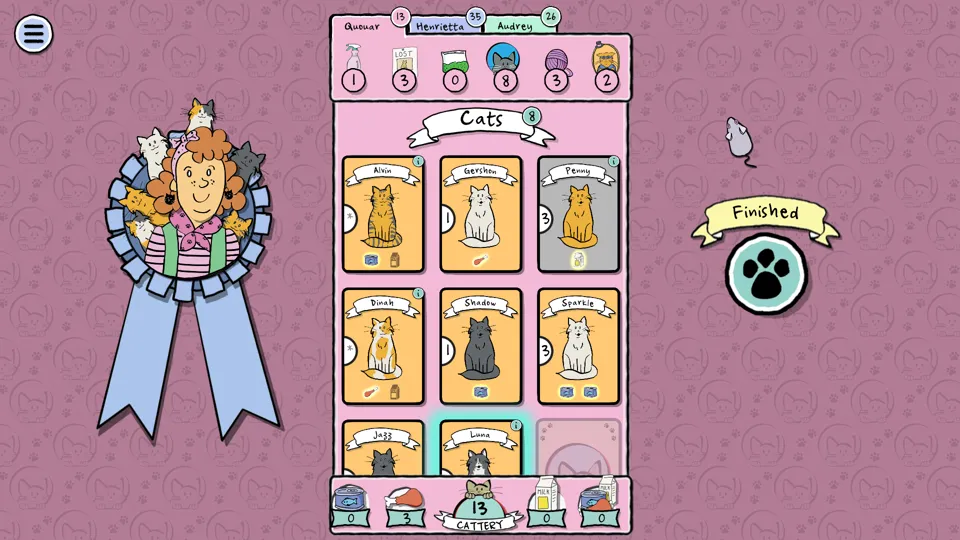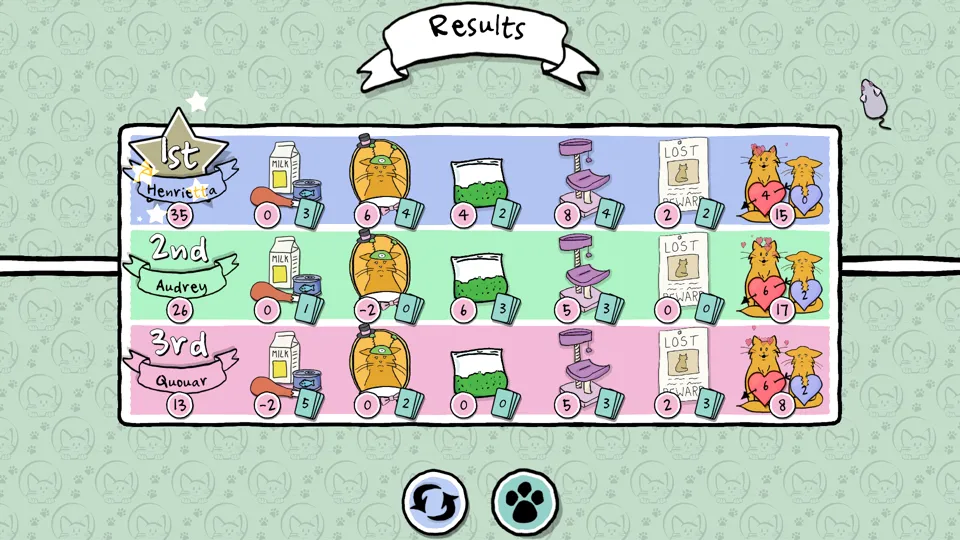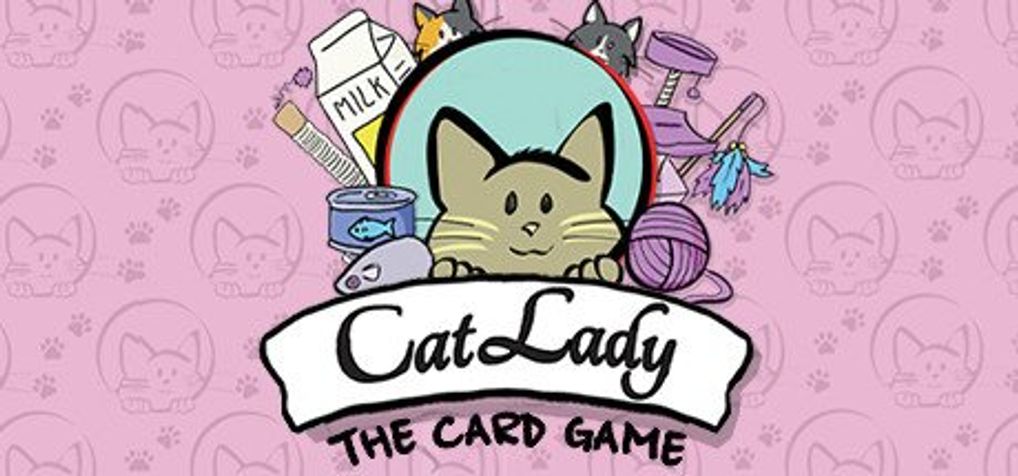Cat Lady 2
In my Blood Rage review , I talked about board game ports and their ability to recapture some of the particular joy and sense of community that board games themselves conjure. Reading back on it, I think I was little too harsh on Blood Rage as a standalone game, instead judging it on how well it recreated that board game experience. With Cat Lady, I have an opportunity to revisit the concept of ports and the broader question of on what merits a video game based on a board game should be judged.
 Also, kitties
Also, kitties
Cat Lady is a port of the AEG card game of the same name. You are one of several cat ladies, collecting cats for your cattery, feeding them, buying them toys, and dressing them up in cute costumes. Each turn, the player picks one row or column of cards, collects all of them, and tries to get a good combination of cats and cat accessories to prove she is the most cat of the cat ladies. For a simple premise, there’s a fair amount of strategy involved, with point deductions for insufficient cards in a particular category, wasted food, or unfed cats. While there may seem to be a lot of cards at the outset, the game moves quickly, and the large number of cards disappears long before your combos are ready for it to.
 Pictured: Me not keeping track of how many cards were left
Pictured: Me not keeping track of how many cards were left
Cat Lady doesn’t have the space to be a grand strategy game. The player can approach each round with a particular goal - which is generally shaped by the stray cats and their ability to provide massive bonus points - but the frantic and random pace of the game can make any goal setting meaningless. In some games, franticness works against the game, in that it makes it impossible to follow or to plan, but somehow, it works in Cat Lady. Cat Lady is a single-player game and knows it. The player approaches with their goals, and while the AI players might disrupt that goal, they are, in turn, working towards their own. The mystery of their goals mean it’s okay for me to not necessarily track everything they did. It’s enough to track the impact it had on my own goals, and begin to move adjust around it.
That said, Cat Lady does an excellent job of making the AI’s actions transparent. While the actual actions the AI takes are often too quick to effectively track, the player can click on another player at any time to see what they have and what they might be working towards. Though I rarely did, there is an opportunity to try to discern the undiscernable.
 …maybe I should have kept track of my opponents more
…maybe I should have kept track of my opponents more
The quick pace and tight focus of each round means the game moves quickly. I played several rounds for this review, and none lasted more than ten minutes. It’s refreshing to see a game that doesn’t overstay its welcome. This is a game for quick sittings and brief strategy, and it is very good at being that.
The games mechanics and quick pace are very much complemented by its music and art style. Cat Lady’s art is cartoonish in an inviting way, with easily distinguishable sketches of cats. The music is simple and exists almost solely in the background. Even the mouse toy-shaped cursor does an excellent job creating an atmosphere of being surrounded by cats and nouns like “cattery.”
Indeed, the only real criticism I have is less a criticism of the game itself, and more a lament about what it could be. Going back to the idea of board game ports, the majority allow multiplayer specifically to reinvoke that sense of all being clustered around a table, poring over cards and meeples. Cat Lady has no multiplayer, other than Steam’s play together option, and the game suffers for it. This is a game I very much want to bring out during game nights so I can hear my friends bicker over who gets to adopt Cow, and fighting over the last pirate costume. More than anything, this is a game that leaves me wanting to play it more, even as I recognise that lingers for exactly the right amount of time.
Developer: Nomad Games
Genre: Card Game
Year: 2019
Country: United Kingdom
Language: English
Play Time: 5-10 Minutes/Round
